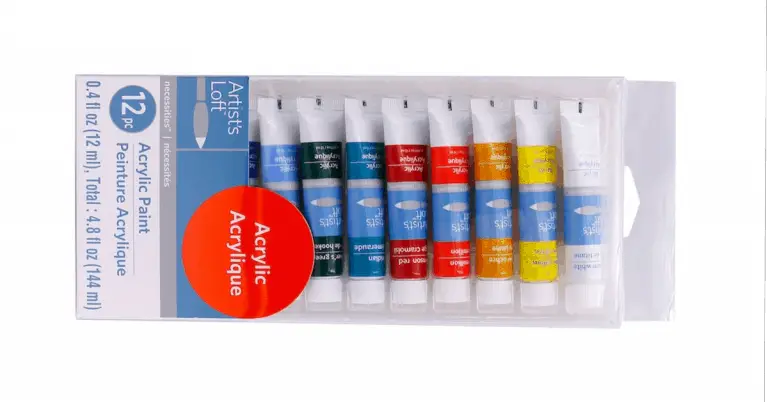Why Your Paint Brushes Fray – And What To Do About It
I’m not always the best when cleaning my paint brushes, which has resulted in more than a few of my brushes becoming unusable, with frayed bristles, or worse. Brushes can be expensive depending on their size and material, and a damaged paint brush is a frustratingly wasteful thing.
A frayed brush is nearly useless when the bristles are out of shape and spread at angles. I’ve had to train myself to keep my brushes clean, be careful with loading paint, and store them in the best way possible.
Paint brushes will fray due to incorrect usage, cleaning, and storage. Care for brushes by cleaning in lukewarm water or brush cleaning fluid, storing them upright, and never allowing the paint to dry on the bristles. You should avoid overloading paint onto the brush as the paint gets into the ferrule.
If you’ve been the victim of your own lousy brush-keeping, there are ways to revive a damaged brush. I’ve found a few tips on how to take care of your brushes properly, which will prevent future damage to new brushes. And for those brushes which are too far gone to save, I have some ideas for what you can do with them.

(This article may contain affiliate links and I may earn a commission if you make a purchase)
Why Do My Paint Brushes Fray?
Paint brush bristles are made of various synthetic and natural materials. These bristles can be either stiff or soft and have varying levels of quality. Regardless of the price of the brushes, all bristles which are improperly cared for will get damaged. In addition, some painting techniques will break the bristles down, and painting on rough surfaces will fray them faster.
Leaving paint to dry on your brushes is a guaranteed way to ruin your paint bristles. Hard, dried paint can be nearly impossible to remove, and harsh cleaning will result in damage.
However, even if you’re diligent about cleaning your brushes after using them, you still need to make sure that heat and chemicals don’t ruin your bristles. After your brushes have been correctly cleaned, they will need to be dried in a way that doesn’t bend or fray the bristles. Clean, dry brushes should also be appropriately stored to prevent any further damage.
If you’ve not been cleaning, drying, and storing your paint brushes correctly, or if you’ve been using the wrong brush type with specific painting methods, your paint brushes will most likely have fraying bristles.
I’ve outlined the basic methods for general and specific brush care below. I’ve also included some techniques and tips to fix frayed paint brushes that you should find helpful.
Paint Brush Types and Care
Regardless of the type of paintbrush you’re using, they will all require the same basic care, which I have outlined for you below. Following these steps will keep your brushes in good condition for longer, though eventually, brushes will wear down and need to be replaced.
A paintbrush is made of four sections: the bristles, ferrule, crimp and handle.
Bristles are the hairs of the brush, and they can be made of either natural or synthetic fibers. Many brushes designed for acrylic paints are made of synthetic hair, using polyester or nylon. Acrylic paint can be very hard on natural fibers, so many artists choose to use synthetic brushes for this medium. In addition, synthetic fibers are easier to clean.
Watercolor artists often choose to use natural hair brushes for their springiness and flow. Sable is one of the most popular as it gives a fine, delicate line, while squirrel hair is better for larger brushes.
Watercolor brushes need only be cleaned in water and a little soap. Wash them until the water is clear, and always be sure to rinse and dry them thoroughly. Store them vertically so as not to damage the glue inside the ferrule that holds the brush together.
Hog bristle brushes are a good choice for flat oil brushes. Be aware that hog bristles look as though they are frayed with split ends, but this is part of their unique nature, and it makes them excellent brushes for loading with thick paint. They become softer as they are used but still require careful cleaning. Brushes that are used for acrylics and oils will need harsher cleaning methods.
The ferrule is the metal piece of the brush into which the bristles are inserted. The crimp is the ridge that connects the ferrule to the handle. Getting paint into the ferrule (by overloading the brush with paint) is one of the leading causes of fraying. Keep the bottom part of the bristles paint-free, and don’t dip your brushes deep into your paint.
Regardless of whether they are natural or synthetic, all brushes will need to be properly maintained:
- Clean brushes while in use
- Change the water/cleaning fluid regularly while painting
- Never allow paint to dry on your brushes
- Use the correct cleaning materials for your paint type
- Don’t leave brushes to stand in water/cleaning fluid
- Wrap brushes to protect and shape them in storage
- Store brushes vertically if possible
- Never store brushes pointing downwards, as this will distort the bristles
How To Fix A Fraying Paint Brush
A synthetic acrylic brush can sometimes be saved if they are not too severely damaged but have some paint dried on them. All you will need are dish soap, boiling water, vinegar, and a clean rag.
- Work a little dish soap into the bristles
- Clean the brushes off in a glass of hot water or, if they are very dirty, a glass of hot vinegar. Vinegar should lift any deep grime
- Dry the brush on a clean rag by rolling the bristles
The bristles can be reshaped with matt clay hair product and left overnight to set.
Some people use egg white, gum arabic (Amazon), and even hand soap to set synthetic brushes. Whichever method you choose, rinse your brushes in clean water before use.
Treat dried and frayed oil paintbrushes with a commercial compound like Winsor & Newton’s Brush Cleaner and Restorer (Amazon).
If you can’t afford an art-quality restorer, many artists have been able to use nail polish remover instead.
Make sure to soak your brushes in a glass container as the solution will eat through plastic.
- Soak brushes in Winsor & Newton’s Brush Cleaner and Restorer
- Rinse brush in paint thinner or mineral spirits
- Clean in a solution of warm soapy water to ensure there is no solvent left
- An optional tip is to dip the bristles in a bit of safflower oil after they have been cleaned
Never leave your brushes to soak for too long, as this will bend and fray the bristles.
After you have cleaned brushes, make sure to dry them horizontally so that the bristles dry flat and not at an angle.
Store your brushes vertically or with the bristles pointing upright. You can wrap paper around the brush to keep the bristles in shape.
If you need to store wet brushes that are still in use, you can seal the bristles in plastic, such as a bag, or with clingfilm. Make sure that there is no air left as otherwise the paint will dry and harden.
What To Do With Damaged Paint Brushes
Bristles that are too damaged to be reshaped or cleaned can still be of use.
- Cut them down close to the ferrule to use as a stippling brush
- Frayed brushes can be used for expressive, textural strokes
- Use brush handles for scratching techniques like sgraffito
- Rather than using good brushes to mix paint, save your frayed brushes for this purpose
While proper care and maintenance will prevent brush damage in the long run, don’t despair if your brushes are only a little frayed. If the damage is not too extensive, the bristles may be cleaned and reshaped.
Regularly cleaning your brushes during and after use will prevent paint from getting into the ferrule, which will surely ruin your bristles.
More From Artistry Found
- Are Expensive Paint Brushes EVER Worth It? (For Artists)
- Should I Sell My Original Paintings Or Just Prints? (Explained!)
- Do Oil Paintings Melt In Heat? (What You Need to Know)
- Artist’s Loft Acrylic Paint Review (Are They Any Good?)
- Should Artists Date Their Paintings? (What You Need to Know)
Resources:






